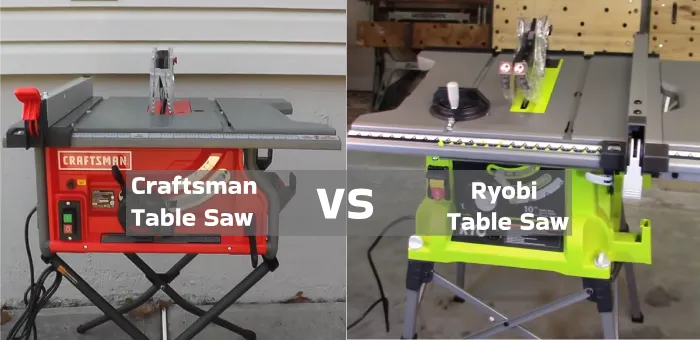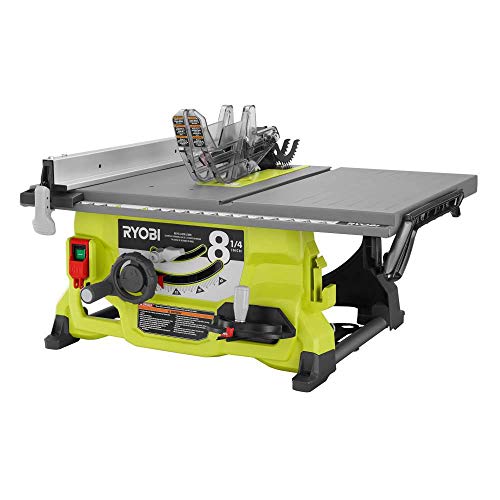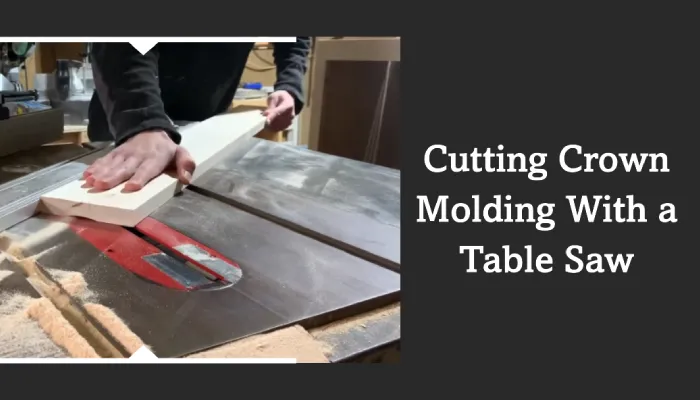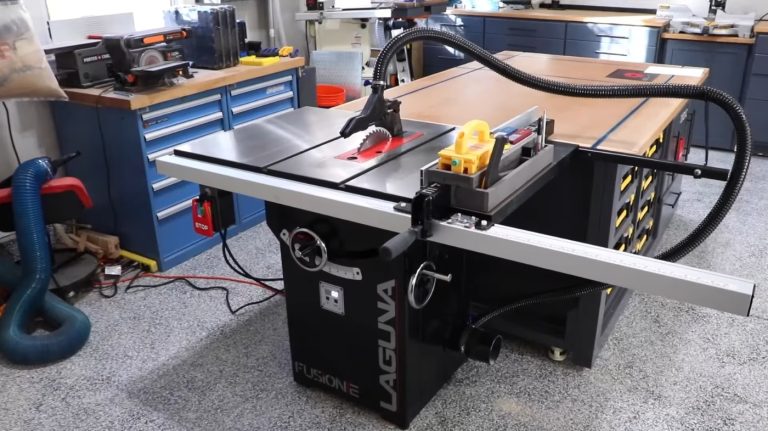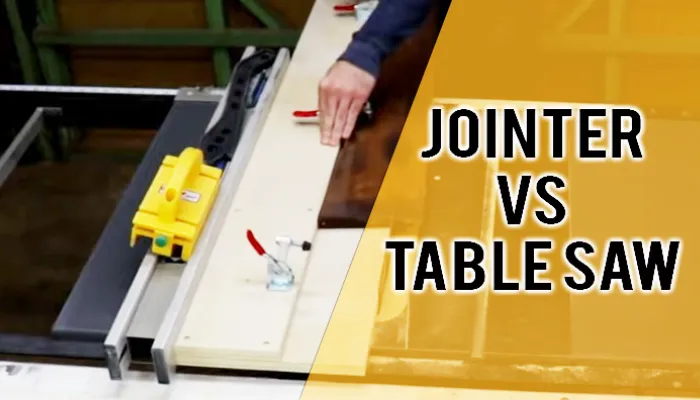Craftsman vs Ryobi Table Saw: 12 Significant Differences
Craftsman and Ryobi are reputable brands offering several table saw models ideal for woodworking enthusiasts and professionals. As I know each brand brings its unique features, design philosophies, and performance characteristics.
Most Craftsman models boast 15 to 24-amp motors that provide ample power to perform demanding cutting tasks. Conversely, Ryobi, while still delivering satisfactory performance, often features slightly lower amp ratings (around 10 to 15 amps) and may incorporate lighter materials in certain components.
In this discussion, I will discuss these differences and help you make an informed choice. So, let’s dive in and discover which woodworking table saw best fits you.
- Powerful 13 Amp Motor (5600 RPM)
- Easy-to-use Rip Fence System
- Lightweight and Portable Design
- Convenient Large On/Off Switch
- Adjustable Miter Gauge for Precision
- Laser Trac Precision Guidance System
- Extendable Out-feed Support for Control
- Wide Base for Stability with Heavy Pieces
- Quick Moving Fence for Efficient Rip Cuts
- Portability with Detachable Base Design
12 Differences Between Craftsman and Ryobi Woodworking Table Saw
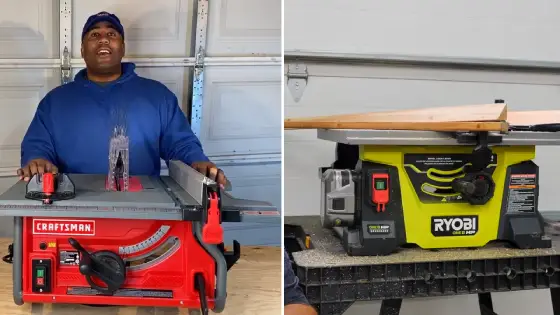
When comparing the Craftsman and Ryobi woodworking table saws, I found several key differences you should consider.
- Motor power
- Build quality and durability
- Fence system
- Portability and weight
- Dust collection
- Blade options and compatibility
- Blade guard and safety features
- Additional features
- Noise levels
- Availability and model variety
- Ease of assembly
- Price point
No 01. Motor Power
Craftsman table saws outperform Ryobi models in motor power, boasting robust motors with higher amp ratings ranging from 15 to 24 amps, providing ample power for a wide range of cutting tasks. This higher motor power allows Craftsman saws to handle more demanding projects and easily cut through denser materials.
On the other hand, Ryobi table saws still offer respectable power but typically feature slightly lower amp ratings, ranging from 10 to 15 amps. While this difference may not be significant for lighter cutting tasks, it can impact the saw’s performance when faced with tougher materials or more challenging projects.
No 02. Build Quality and Durability
Both Craftsman and Ryobi woodworking table saws are built differently, making them suitable for different levels of use.
Craftsman table saws are known for their sturdy construction and use of high-quality materials. These models are crafted with durable components that withstand frequent and heavy-duty use. With their robust design, Craftsman table saws have a longer lifespan than their Ryobi counterparts.
Meanwhile, Ryobi table saws still offer durability but incorporate more lightweight materials in certain components. While this makes them suitable for lighter woodworking tasks, they may not be as resilient in handling rigorous applications over an extended period.
Therefore, if you require a table saw for heavy-duty use, Craftsman would be preferable due to its superior build quality and durability.
No 03. Fence System
Regarding the fence system, the woodworking table saws from Craftsman and Ryobi present notable differences in design and functionality.
Craftsman models typically feature precision-engineered fence systems that allow for accurate and smooth adjustments, resulting in enhanced cutting precision. The precise adjustments offered by Craftsman’s fence system ensure that the material being cut remains in place, minimizing the risk of errors or misalignments.
In contrast, Ryobi table saws have a simpler fence design, which, while effective, mightn’t provide the same level of precision as Craftsman counterparts. This disparity in fence systems can significantly impact the user’s ability to achieve accurate cuts.
No 04. Portability and Weight
When it comes to portability, Ryobi table saws often have an advantage. This is due to their use of lighter materials in their design, making them easier to transport. If you prioritize ease of transport, Ryobi table saws would be better for you.
On the other hand, Craftsman table saws have a heavier build, which enhances stability during operation but may limit their portability. Depending on your requirements, the weight of the table saw can be a significant factor in your decision-making process.
No 05. Dust Collection
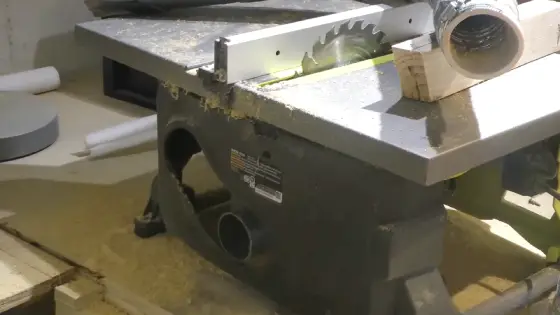
Craftsman models often offer more advanced systems for efficient containment of sawdust. They are equipped with efficient dust ports and collection bags, creating a cleaner and safer working environment.
These advanced systems ensure that a significant amount of sawdust is captured and contained, reducing the risk of respiratory issues and maintaining a tidy workspace.
Alternatively, Ryobi table saws have simpler dust collection setups, resulting in less effective containment of sawdust. While they may still offer some dust collection, they may not be as thorough or efficient as the systems found in Craftsman models.
No 06. Blade Options and Compatibility
Users have greater flexibility in their cutting applications with Craftsman models because they offer wider blade sizes and options. This is particularly important for users who frequently work on diverse projects involving various material types.
With Craftsman table saws, users can easily change different saw blades to accommodate different cutting needs, whether ripping large boards or making precise crosscuts.
In contrast, Ryobi table saws have fewer options when it comes to blade compatibility, potentially limiting the user’s ability to optimize their cutting experience.
No 07. Blade Guard and Safety Features
The disparity between Craftsman and Ryobi woodworking table saws becomes apparent regarding blade guards and safety features.
Craftsman table saws often have advanced blade guard systems and additional safety features. These safety features of table saws are designed to enhance user protection and prevent accidents during operation.
For example, Craftsman models may have a riving knife, which helps prevent kickback and keeps the workpiece stable. They may also feature anti-kickback pawls, further reducing the risk of kickback.
Additionally, Craftsman table saws may have a transparent blade guard, allowing users to see the cutting area while still providing protection.
In contrast, Ryobi table saws prioritize safety but offer a more straightforward approach. Their blade guard systems typically consist of a single guard that provides basic protection.
Users who prioritize comprehensive safety features may lean towards Craftsman models, while those who prioritize simplicity may find Ryobi’s approach more suitable.
No 08. Additional Features
Craftsman table saws often come equipped with built-in storage, allowing users to keep their tools and accessories within easy reach. Additionally, Craftsman models frequently feature tool-free adjustments, enabling users to make quick and precise changes to their cutting settings without additional tools.
Furthermore, Craftsman table saws prioritize safety enhancements, such as advanced blade guards and safety switches, providing users with added protection during operation.
Then again, Ryobi table saws focus on providing essential functionalities without the same emphasis on additional conveniences. Therefore, if you prioritize a feature-rich experience, Craftsman models may be more appealing to you.
No 09. Noise Levels
Craftsman table saws, emphasizing convenience and safety enhancements, also exhibit variations in noise levels compared to Ryobi models, making this an important factor to consider when choosing between the two brands.
Craftsman models are designed with sturdy construction and features contributing to quieter operation. This provides a more comfortable working environment, especially for users working in shared spaces or those sensitive to noise.
On the other hand, Ryobi table saws still adhere to acceptable noise standards but might produce slightly higher decibel levels.
While both brands prioritize safety and functionality, the noise levels can differ, and it’s crucial to evaluate your specific needs and preferences.
No 10. Availability and Model Variety
Ryobi woodworking table saws offer a wide range of models, catering to diverse user needs and preferences. With its extensive lineup, Ryobi provides users with a variety of options to choose from.
Whether you require a smaller table saw for compact spaces or a larger one for heavy-duty woodcutting tasks, Ryobi has you covered.
Additionally, Ryobi offers different features and price points, enabling users to find a table saw that aligns with their requirements. This model variety sets Ryobi apart from Craftsman, as Craftsman focuses more on quality over quantity, resulting in a more limited range of options.
Therefore, if you value having a wide selection, Ryobi’s model variety makes it a more attractive choice for woodworking enthusiasts.
No 11. Ease of Assembly
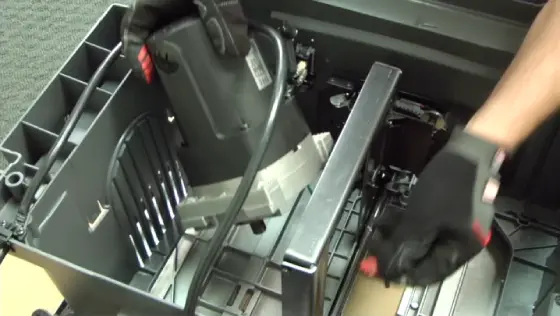
Regarding the assembly process, one notable distinction between the Craftsman and Ryobi woodworking table saws lies in the level of intricacy involved.
Craftsman models, known for their durability and precision, require a more detailed assembly procedure. This entails carefully following the instructions and paying close attention to each step.
The Craftsman table saw may have more components and require adjustments for alignment and calibration to ensure optimal performance.
Then again, Ryobi table saws offer a more straightforward assembly experience. These models are designed to be user-friendly, with fewer components and simplified setup instructions. Users who prioritize a quick and hassle-free assembly process may find the Ryobi table saws more convenient.
No 12. Price Point
When comparing the price points between the two woodworking table saw brands, it becomes evident that Craftsman models generally fall into a higher price range than their Ryobi counterparts. This price difference is justified by Craftsman’s focus on durability and robust construction.
Craftsman table saws are built to withstand heavy use and provide long-lasting performance. On the other hand, Ryobi offers a more budget-friendly option without compromising essential features.
If you have budget constraints, Ryobi may be a more attractive choice as it balances functionality and affordability. Considering your woodworking needs and budget when purchasing between these two brands is important.
Comparison Table Between Craftsman and Ryobi Table Saw
| Feature | Craftsman Table Saw | Ryobi Table Saw |
| Motor Power | Robust motors ranging from 15 to 24 amps | Typically features motors with ratings of 10 to 15 amps |
| Build Quality | Sturdy construction and durable materials | Balances durability with more lightweight components |
| Fence System | Precision-engineered for accurate and smooth adjustments | Simpler design that may not provide the same precision |
| Portability and Weight | Heavier build for enhanced stability | More lightweight design for increased portability |
| Dust Collection | Advanced systems with efficient dust ports and collection | Simpler dust collection setups |
| Blade Options | Broader range of blade choices and sizes | May have more limited options for blade compatibility |
| Additional Features | Often includes built-in storage, tool-free adjustments, and safety enhancements | Focuses on essential functionalities without extensive extras |
| Model Variety | May have a more limited range of models | Offers a diverse selection catering to various needs |
Craftsman vs Ryobi Table Saw: Affordability and Precision
When choosing between the Craftsman and Ryobi woodworking table saw, it’s essential to consider the specific needs and preferences of the user.
The Craftsman table saw offers exceptional precision and durability, perfect for professional woodworkers seeking top-notch performance. On the other hand, the Ryobi table saw provides a more affordable option without compromising on quality, making it an excellent choice for hobbyists and DIY enthusiasts.
In my opinion, selecting the right table saw will greatly impact the success and satisfaction of woodworking projects, ensuring a rewarding experience for all. So, take your time to evaluate and compare the features of both brands before making a decision.
Last update on 2025-12-13 / Affiliate links / Images from Amazon Product Advertising API

